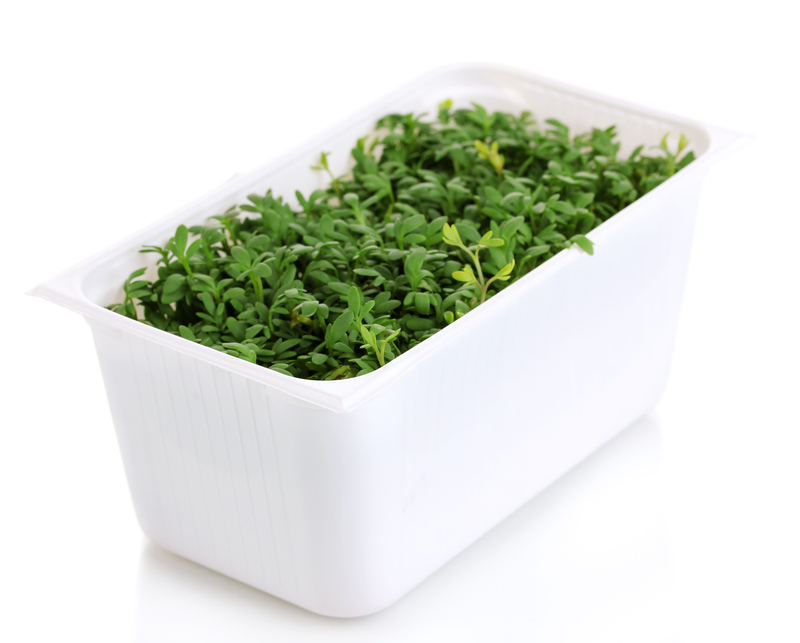Protecting Wildlife by Properly Disposing of PPE Waste
Personal protective equipment (PPE) became a lifeline for humans during the COVID-19 pandemic. However, it has inadvertently become a threat to animals and ecosystems. Understanding the importance of properly disposing of PPE waste is vital for safeguarding Earth's wildlife and natural balance.
Introduction: The Unseen Impact of PPE Waste on Wildlife
In the fight against global pandemics and airborne diseases, PPE such as masks, gloves, and face shields have become everyday essentials. But after use, where does all this equipment go?
Improper disposal of single-use PPE items is now a leading environmental challenge. The impact of PPE waste on wildlife is extensive: tangled animals, ingestion of microplastics, and the contamination of natural habitats are just the tip of the iceberg. Protecting wildlife by properly disposing of PPE waste is no longer an option--it's a responsibility.

Why Is PPE Waste Harmful to Wildlife?
The Growing Pile: A PPE Pollution Crisis
- Billions of Masks and Gloves Disposed Daily
- Non-biodegradable Materials Accumulate in Ecosystems
- Wildlife Mistakes PPE for Food or Nesting Material
PPE items are typically made from durable plastics like polypropylene or latex, which can take hundreds of years to degrade. Discarded masks and gloves wash into rivers, lakes, and oceans, endangering marine and terrestrial animals alike.
Primary Threats to Wildlife from PPE Waste
- Entanglement: Animals often get caught in loose mask straps or glove fingers, leading to injury, impaired movement, or even death. Seabirds, small mammals, and aquatic creatures are particularly at risk.
- Ingestion: Mistaking small PPE pieces for food, wildlife can ingest plastics, leading to internal blockages, malnutrition, or poisoning.
- Habitat Contamination: Chemicals and microplastics released from degrading PPE disrupt the ecosystem balance, affecting food chains at every level.
Ultimately, protecting animals demands an urgent, collective approach to PPE disposal.
How PPE Waste Is Affecting our Planet's Wildlife
Since the outbreak of COVID-19, studies estimate that over 1.6 billion disposable masks entered the world's oceans in 2020 alone. Rivers and forests are now dotted with latex gloves and surgical masks.
- Sea turtles are found entangled in mask loops, unable to swim or feed properly.
- Birds incorporate PPE strips into their nests, risking strangulation or limb loss for hatchlings.
- Small mammals and marine life face internal injuries from consuming shredded mask fragments.
The scale of the threat is immense. Marine Conservation organizations now rate PPE pollution as a rising cause of wildlife injury and death worldwide.
The Importance of Responsible PPE Waste Management
Protecting wildlife from PPE pollution is achievable. Properly disposing of PPE waste not only secures animal habitats but also protects public health and maintains ecological balance.
- Reduces contamination of water sources that humans and animals rely on.
- Prevents harmful microplastics from entering the food web.
- Helps maintain healthy biodiversity and robust ecosystems.
Raising awareness, encouraging sustainable habits, and enforcing proper disposal are essential steps in protecting wildlife by properly disposing of PPE waste.
Types of PPE Waste That Threaten Wildlife
- Single-use face masks: Surgical and cloth masks, especially with elastic straps.
- Disposable gloves: Nitrile, latex, and vinyl gloves.
- Plastic face shields and coverings
- Protective gowns and shoe covers
Best Practices for Proper PPE Waste Disposal
Individual Actions: Steps You Can Take
- Always dispose of PPE in designated bins. Avoid street or natural area littering.
- Cut the ear loops or straps on masks before throwing them away to prevent animal entanglement.
- Double-bag used PPE if you suspect it may be contaminated, following your local health department guidelines.
- Do not flush PPE items down toilets--they are non-flushable and contribute to sewer blockages and waterway pollution.
Community & Organizational Strategies
- Set up special PPE waste collection bins in public areas, workplaces, and schools.
- Run local cleanup and public education campaigns to inform about the dangers of PPE litter.
- Encourage use of reusable and biodegradable PPE alternatives where possible.
- Partner with wildlife organizations for regular monitoring of at-risk habitats.
Global Innovations: Alternative PPE Materials
Another line of defense for protecting wildlife from PPE waste is the development and adoption of greener alternatives. Researchers and manufacturers are now creating biodegradable PPE made from natural fibers like bamboo, hemp, and even seaweed-based plastics.
- Bioplastic masks that decompose in months rather than centuries.
- Reusable cloth masks and gloves that replace single-use variants.
Widespread adoption of such materials could significantly reduce the burden on both landfills and ocean ecosystems.
How Policies and Regulation Can Help
Governments and environmental bodies play a key role in addressing the issue. Implementing clear policies for PPE disposal can protect wildlife on a mass scale:
- Mandate PPE collection points at hospitals, transport hubs, and shopping centers.
- Educate the public on safe PPE disposal through campaigns and updated guidelines.
- Incentivize recycling programs for clean, non-infested PPE materials.
- Enforce penalties for illegal dumping of PPE waste in natural or urban areas.
Enforcement and education together can promote habits that lead to protecting wild habitats and securing a future for endangered species.
How You Can Help Save Wildlife: Simple Steps
Protecting Wildlife by Properly Disposing of PPE Waste: A Call to Action
- Be mindful of your PPE usage and disposal: Reduce, reuse, and recycle wherever possible.
- Raise awareness in your community about the dangers of PPE litter.
- Volunteer or support organizations focused on environmental cleanups and wildlife rescue.
- Advocate for stronger regulations on PPE waste management in your city or town.
Every small action taken by individuals adds up to major positive change for animals and ecosystems across the globe.
Recycling and Reusing PPE: Are There Options?
Some innovative companies are researching ways to decontaminate and recycle certain PPE materials for safe reuse in non-medical contexts, or for conversion into materials such as plastic lumber. Although such initiatives are in early stages, they hold promise for reducing the volume of PPE ending up in nature.
Before recycling, always check your local guidelines--not all facilities accept PPE waste, given potential health risks.
Educational Resources and Further Reading
For those eager to take deeper action in protecting wildlife by properly disposing of PPE waste, numerous organizations offer valuable resources, including:
- World Wildlife Fund (WWF): Reports and tips on plastic pollution and wildlife injury.
- Ocean Conservancy: Community cleanup toolkits and real-time data on ocean waste.
- National Geographic: Guides to tracking the environmental impact of COVID-19.
- Your local government website: Location-specific instructions on PPE disposal and recycling.
Key Points to Remember
- PPE litter is a deadly risk for wildlife everywhere.
- Proper disposal begins with individuals and expands through policy and education.
- Sustainable, biodegradable PPE options are critical for the future.

Conclusion: The Road to a Cleaner, Safer Planet
Protecting wildlife by properly disposing of PPE waste is more than a personal choice--it's a commitment to environmental stewardship. With mindful action, innovative solutions, community engagement, and the support of effective policy, we can reduce PPE pollution and help restore balance to Earth's precious ecosystems.
Let's work together to ensure that the protective gear designed to save human lives does not become a silent killer of our planet's incredible wildlife.
Frequently Asked Questions about PPE Waste and Wildlife Protection
-
Can PPE waste be recycled?
Some PPE items may be recyclable if they are uncontaminated--but always check with your local waste authority. -
Are biodegradable masks effective?
Biodegradable masks can be effective for everyday use and break down much faster than standard plastics, reducing environmental harms. -
What should I do if I see PPE litter in nature?
If it's safe, use gloves or a grabber to collect the litter and dispose of it in a proper waste bin. Every piece picked up is one less risk for wildlife.
Take the First Step: Pledge to Protect Wildlife from PPE Pollution
Make a pledge today to consistently dispose of PPE waste responsibly. Share your knowledge with friends and family. By staying informed and proactive, you become part of a global solution--protecting wildlife by properly disposing of PPE waste for the good of all living things.